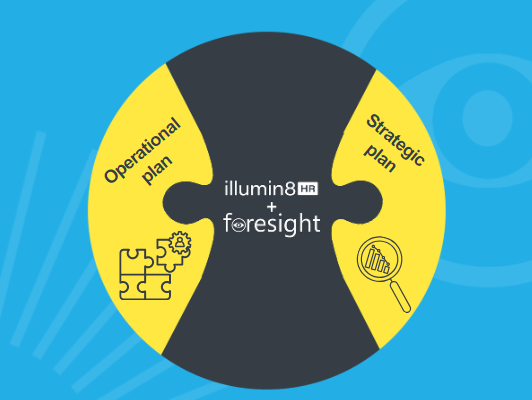HR is being called upon to gather data, analyse trends and provide insight on more complex people challenges than ever before. This requires sophisticated yet user-friendly analytics tools that can tackle business-critical questions at pace. In order to meet customer needs, HR tech vendors must offer cutting-edge analytics that can be quickly integrated and continually upgraded.
People analytics is growing. According to analysts, Insight 222, 60% of companies grew their people analytics team in the 12 months to June 2021. And growth shows no sign of slowing with 75% of people analytics leaders predicting they will receive even more investment for their teams in the 12 months to June 2022. The market is certainly booming with 121 people analytics technologies available and a market value of an estimated $2 billion.
Why is people analytics on the rise?
People analytics is on the rise because HR has become more complex due to the societal forces shaping today’s workforce. A report by Red Thread Research on the HR agenda names engagement; experience; and diversity, equity, inclusion, and belonging (DEIB) as the primary areas of HR focus. Other reports highlight hybrid working, mental health, and pandemic-driven work environments. These forces have put HR and people analytics centre stage as leaders try to better understand and support their workforces.
The outcome being that people analytics has moved up the agenda and up the organisational hierarchy. 90% of CHROs make it clear that data and analytics are an essential part of the HR strategy and 89% of people analytics functions report directly to the CHRO or to a member of the HR leadership team.
What does the future hold for people analytics?
Given the pace of change and the importance of people analytics as discipline within HR, people analytics is a suite of tools that no enterprise can afford to be without. In order to keep up, companies are increasingly looking to integrate with non-traditional HR tech and given the recent shifts in the world of work, these types of integrations will grow.
A report by Sapient on 2021 and 2022 HR systems shows that 40% of organisations are acquiring tools and technology from a solution provider that is not their HR technology vendor. This trend, paired with a considerable drop in organisations with standalone solutions and fewer new vendors in a fast growing market, lends itself to a landscape in which more partnerships will be formed:
As far as the market, we foresee…. more partnerships across different types of vendors. We’re seeing vendors more actively collaborating with each other when they’re not able to offer the full people analytics tech stack. – Red Thread Research, People Analytics Tech 2020
Why choose a partner for people analytics?
Acquiring an analytics company or building an offering internally can be costly and time consuming. To get results fast while minimising risk and moving quickly in a rapidly unfolding market, finding a partner can offer an effective and scalable solution. How?
-
Save cost
Using a partner, you can choose to take a subscription which minimises cost and risk. Acquisition comes at an increased cost and risk of buying an entire business. Likewise, in-house development is costly.
-
Reduce time to revenue
Acquisitions can take months or years to realise value. Likewise building a solution from the ground up requires significant up-front investment. A partner approach can significantly reduce time to revenue to just weeks.
-
Access expertise
A partner offers subject matter expertise on everything from integration to technical support and sales. A partnership offers expertise in a highly competitive space without the need for investment in developers or product managers.
-
Tap into innovation
A partner firm will provide a roadmap for product development and a commitment to new releases as the product is updated. With a build or acquire option, the business takes full responsibility for innovation and the resources to drive it forward.
-
Ongoing support
Support extends to not only to the rollout of software but driving adoption too. With a partner agreement, this can form part of the relationship, ensuring your sales team have the knowledge and understanding to drive uptake.
-
Data integration
When acquiring a platform, or building from the ground up, your team will need to learn which datasets are needed and how to use them to generate insight. Conversely, a partner will be well versed in integrating varied datasets and working with whatever you have.
-
Defining metrics
Building out people analytics metrics is a time-consuming process requiring expertise. A partner will bring to the table out-of-the-box modules and metrics, which can be tailored based on the data you have available in your core technology.
-
Guarantee performance
With an acquire or build model, you’ll need to put in place the infrastructure and technical capability to guarantee performance and stability of the solution. However, when using a partner, it is their responsibility to ensure that performance matches your, and your customers’, needs.
-
Ensure security
A partner can offer a simple and secure alternative to designing, building and maintaining security while providing you with full control over access including functional, content, and data access.
-
Scalability
Whether your customers just need reports and dashboards, or they’re ready for advanced people analytics, a partner can cater for every need. With alternative models, you will need to continue to respond to your customers’ needs, and market changes.
The speed of the development in people analytics and the pace of change in the problems that it’s being used to solve, mean that partnering provides a responsive and robust solution that will evolve over time. With an ongoing commitment to innovation, development and security, a partner will provide a forward-looking solution that can be used for new needs as they are identified.
If you are still unsure about your options for integrating people analytics into your offering, we have put together a comprehensive comparison of the different routes to market:




